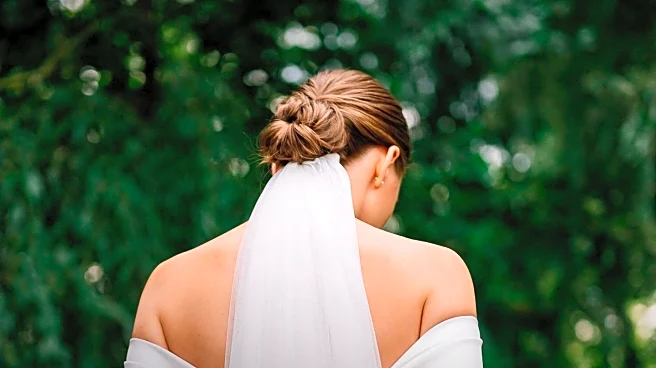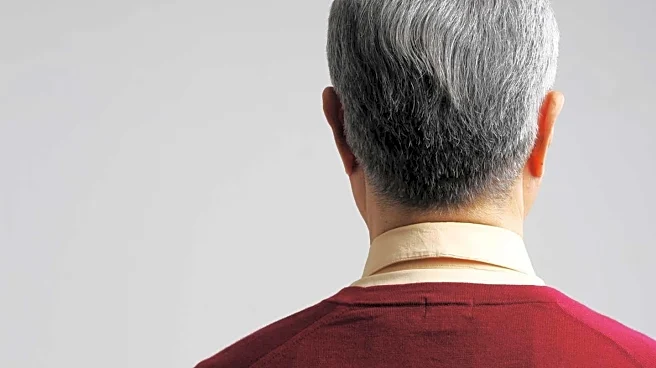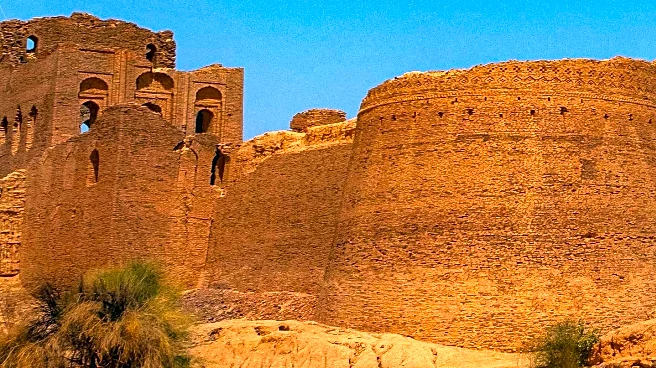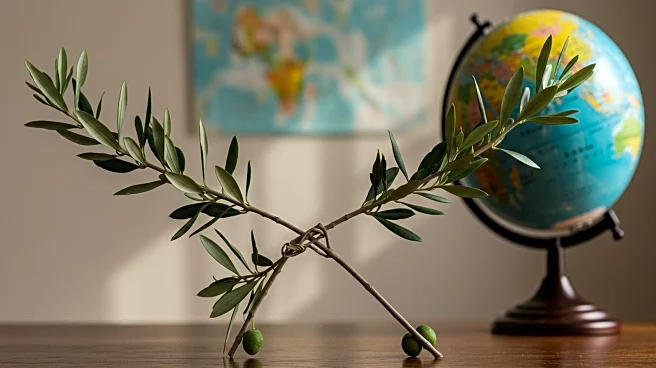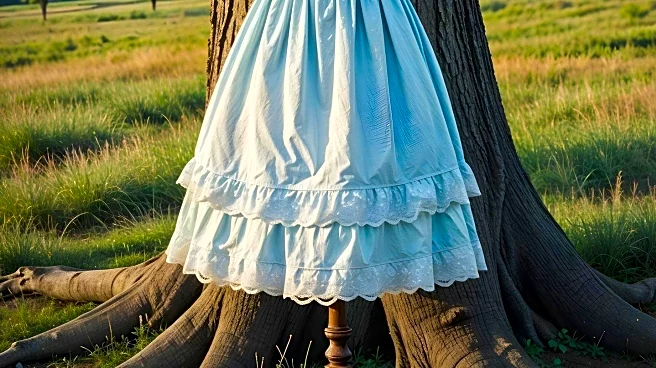What is the story about?
What's Happening?
The bridal veil, a traditional accessory in Jewish weddings, holds deep cultural and religious significance. Historically, the veil is linked to themes of virginity and modesty, with its roots traced back to ancient Jewish texts such as the Mishnah. The practice of covering the bride's face with a veil, known as 'badeken,' is particularly prevalent in Ashkenazi Hasidic customs. While many brides embrace the veil as a symbol of tradition, others view it as an uncomfortable barrier. The veil's material, often tulle, varies in opacity, with some communities opting for completely opaque veils. The tradition also includes incorporating fabric from previous generations, adding a sense of heritage and continuity. Despite differing opinions on its symbolism, the veil remains a prominent feature in Jewish weddings, representing a rite of passage and marking a significant transition for the bride.
Why It's Important?
The bridal veil's significance extends beyond its aesthetic role, reflecting broader cultural and religious values within Jewish communities. It symbolizes modesty and the bride's transition into a new phase of life, serving as a tangible connection to ancestral traditions. The veil's use in weddings highlights the importance of maintaining cultural heritage while navigating modern interpretations of religious practices. For some, the veil offers privacy and a moment of introspection during the emotional wedding ceremony. However, it also raises questions about gender roles and the bride's agency within the ritual. As Jewish communities continue to evolve, the debate over the veil's role in weddings underscores the ongoing dialogue between tradition and contemporary values.
What's Next?
As Jewish communities grapple with the balance between tradition and modernity, discussions around the bridal veil are likely to continue. Brides and grooms may increasingly seek ways to personalize their wedding ceremonies, incorporating elements that reflect their individual beliefs and values. This could lead to a broader acceptance of diverse practices within Jewish weddings, allowing for greater flexibility in how traditions are observed. Additionally, the conversation around gender roles and participation in wedding rituals may prompt further examination of how these customs can evolve to reflect contemporary understandings of equality and partnership.
Beyond the Headlines
The bridal veil's significance in Jewish weddings also touches on deeper cultural and ethical dimensions. It raises questions about the visibility and objectification of women during ceremonies, challenging traditional notions of modesty and privacy. The practice of using opaque veils, while providing privacy, can also be seen as a form of erasure, prompting critical feminist perspectives on its implications. Furthermore, the veil's role in symbolizing a new beginning for divorced or widowed brides highlights its potential as a marker of personal transformation, regardless of past experiences. As Jewish communities continue to explore these themes, the bridal veil remains a powerful symbol of cultural identity and continuity.
AI Generated Content
Do you find this article useful?
